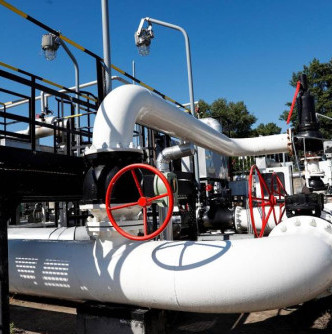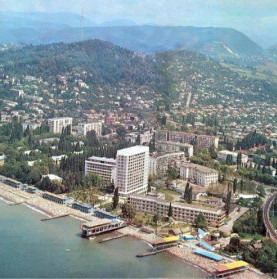The majority of Chinese ports including the largest ones, e.g. Shanghai, are relatively shallow-water that excludes berthing of many up-to-date container carriers. However the situation is changing. Nowadays, China builds a new deepwater port named Yanshan (around two small islands in the Hangzhou Bay). The construction will cost 14.3 billion Yuans. By 2020, 60 berths of 15 meters deep will be built here, and port annual capacity will reach 25 million TEU. The first five berths with an annual capacity of 2 million TEU were built in 2005. The port will be capable of serving the 8,000-TEU container carriers of a new generation. The port will be connected with the mainland through a 32-km bridge.
The best deepwater port of China is constructed on Daxie Island east of the Ningbo port facilities near Shanghai (Province Zhejiang). The main function of the Daxie Port is to receive larger container carriers and oil tankers and provide for further transshipment of their cargoes on smaller vessels that may deliver the cargoes to small sea ports and river ports in the Yangtze River. Other important ports are located in the Fujian Province as well as in Guangzhou and Zhanjiang near Hong Kong. br>
In 2004, the largest Chinese port in Shanghai became the largest port in capacity worldwide. After full commissioning of the deepwater Yanshen Port the Shanghai Port facilities will have a 10-km deepwater coast line with 50 berths. Currently, the Zhanjiang Port located in East Guangdong with berths of more than 13 meters deep is the second in size in China and the fourth – in the world. Tianjin, the largest northern Chinese port, that is 144 years old also is on the upswing. In 2003, the port handled 160 million tons of cargoes. br>
The increasing number of turnovers generates higher loads on the available facilities. Usually it results in bottlenecks but additional investments in the port facilities make it possible to satisfy the increasing demand for port services. However, experts express concern that eventual decrease of cargo transit would result in severe underloading of port facilities in two-three years.
Foreign shipping companies were the first to be entitled to establish fully-foreign-owned companies in China provided they agree to invest capital in development. They were offered to open forwarding and logistics branches without establishment of joint ventures with local businesses in order to let them use their competitive advantages.
Currently, a share of China in the world container carriage market is 25-30%. This share is higher on main routes to Northern America and Europe. The index may be even higher if we take into account the Hong Kong facilities. The densest routes in the region are between China and Japan.
A key inland waterway of China is the Yangtze River that is 55 300 km long. Shanghai is located in the mouth of the river while rapidly developing Chongqing is located upstream the end of the waterway. There are 12 ports along the river accessible by container carriers but the majority of shipping takes place downstream between Shanghai and Nanjing.
The cargo carriage along the Yangtze River amounts to one third of the total container carriage along the inland and near-shore waterways of China. The port facilities increase by 25% every year as economic activity in the ports and cities along the Yangtze River grows. According to forecasts, in 2010 about 300 million tons of cargoes would be carried along the Yangtze River. In 1999, 186 million tons were carried. Probably, in 2020, the western regions might become directly accessible for ocean vessels. In spite of the high shipping potential of the river, the investments during recent 25 years were insufficient. Pursuant to accelerated development plans for the western regions, and taking into consideration that the Yangtze River provides direct access to these regions, the Government started attracting investments in the waterway infrastructure.
The largest operator on the Yangtze River is Changjiang Group with 46% of all cargo carriage along the river in 1999. Another critical navigation problem is the Perl River. However the cargo carriage along the river decreased. Due to the Chinese market upswing, the shipping business is booming. Prices of shipping company shares are skyrocketing. Especially of those companies that operate on Far Eastern routes, because the increased demand for their services resulted in accelerated growth of their business. According to the statistics, in 2004 the freight traffic increased by 35% versus the previous year. The raw material import and in particular crude import is rapidly rising. In 2004, it rose by 30% that resulted in tanker traffic increase.
Japanese shipping company NYK increased its profits in 2003 by 235% providing services for the Chinese export to Europe and Northern America. According to the company, within this period volume of trade between China and Europe increased by 65%. Danish shipping company Maersk is also a winner because a price of its shares increased in 2003 more than 2-fold. The excited market made it possible to sell 50% of P&O shares in P&O Nedlloyd to Nedlloyd in exchange of 25-% equity in a new company that will be listed in the Amsterdam Stock Exchange.
Today the most powerful companies in the sea shipping business in China include China Ocean Shipping (Group) Corp., China Shipping Group, Evergreen Marine Corporation Ltd., Orient Overseas International Limited, APL and Maersk Sealand









